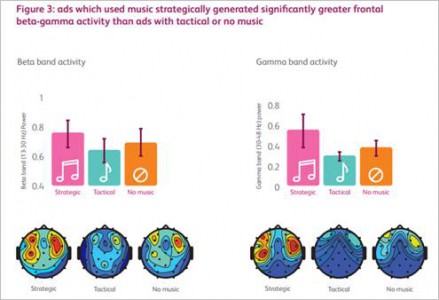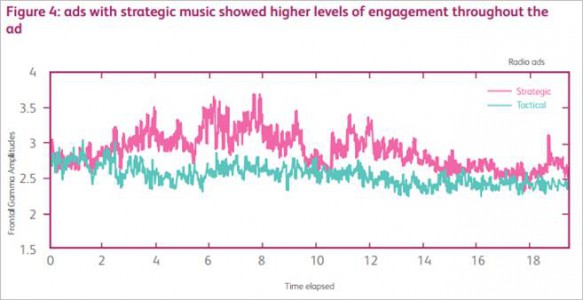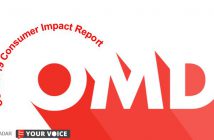After what has clearly been an amazing and entertaining week exploring the world of Global Radio, I was invited to check out Radiocentre’s latest research project at the iconic Abbey Road studios.
Their study was centred around some interesting results derived from brain-wave activity. In conduction with Goldsmiths University (experts in the field of neuropsychology), they carried out EEG analysis on 27 radio ads featuring a combination of strategic, tactical, or no use of music; matched by sector and broad music genre.
The main highlights include:
- Lab tests showed that people respond more positively to radio ads where music is used in a consistent way. This applies at the explicit level, where respondents are asked to score ads, but also at the implicit level, where brain activity is measured.
- In addition, EEG tests show that ads which use music in a consistent way generate 41% more beta-gamma activity than ads with tactical one-off music, and 23% more than ads with no music. This higher level of response continues for the duration of the advertisement. For the non-geeks amongst us, beta-gamma activation is linked to increases in both engagement and commercial success.
- These results echo existing findings from radioGAUGE data from over 700 real-world radio campaigns – that shows that ads which use music in a consistent way deliver higher creative scores and bigger brand effects.
What this week has shown us is that music and the power of the spoken word can be a powerful tool for advertising; working at a subtle, almost subliminal level, triggering an emotional response and a call-to-action. Whilst these findings are interesting and should further support the case for Radio, they do also offer additional support for the use and implementation of audio across all acoustic channels in a consistent way.
Read the full report here: Strike a Chord – How music enhances brand communication





